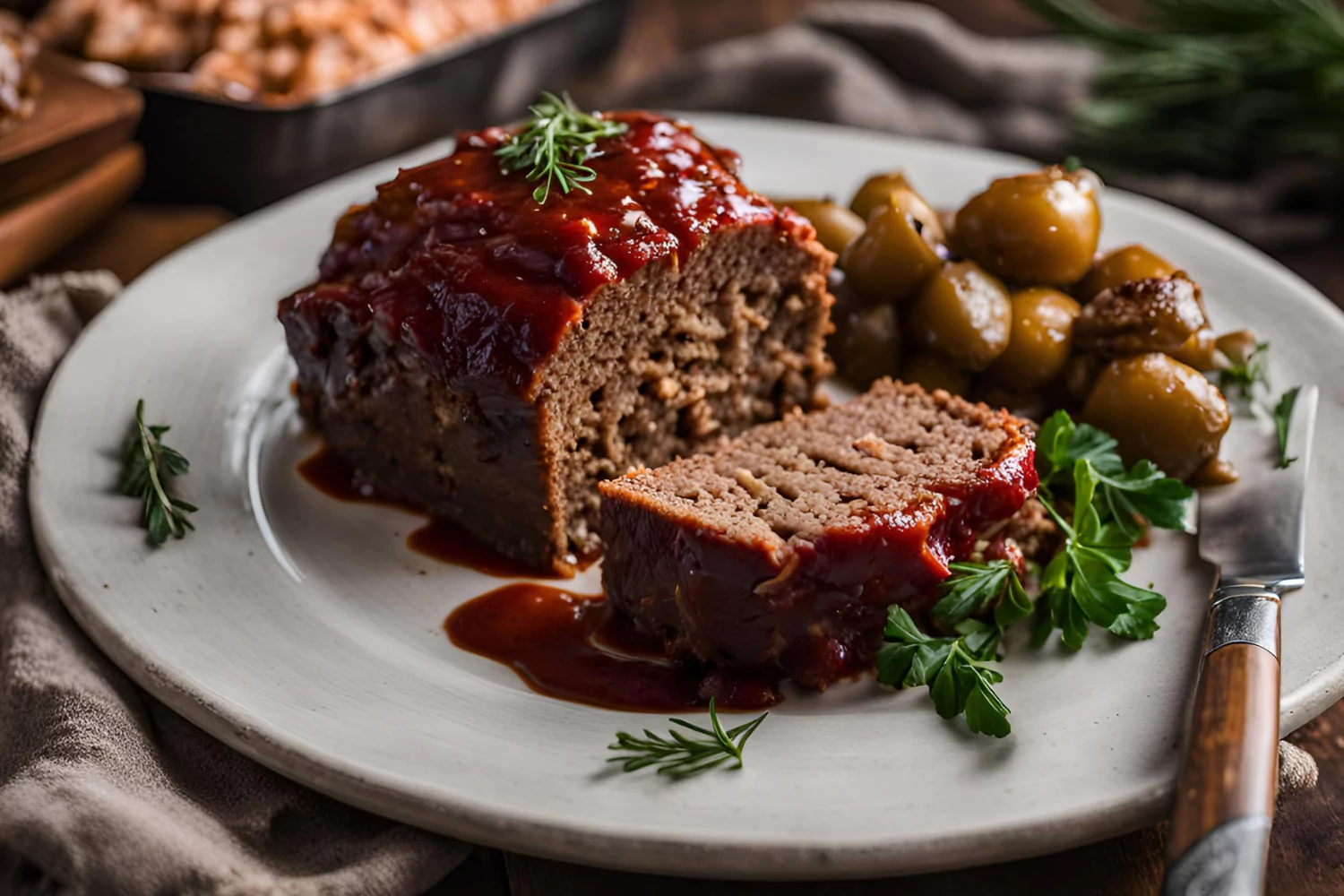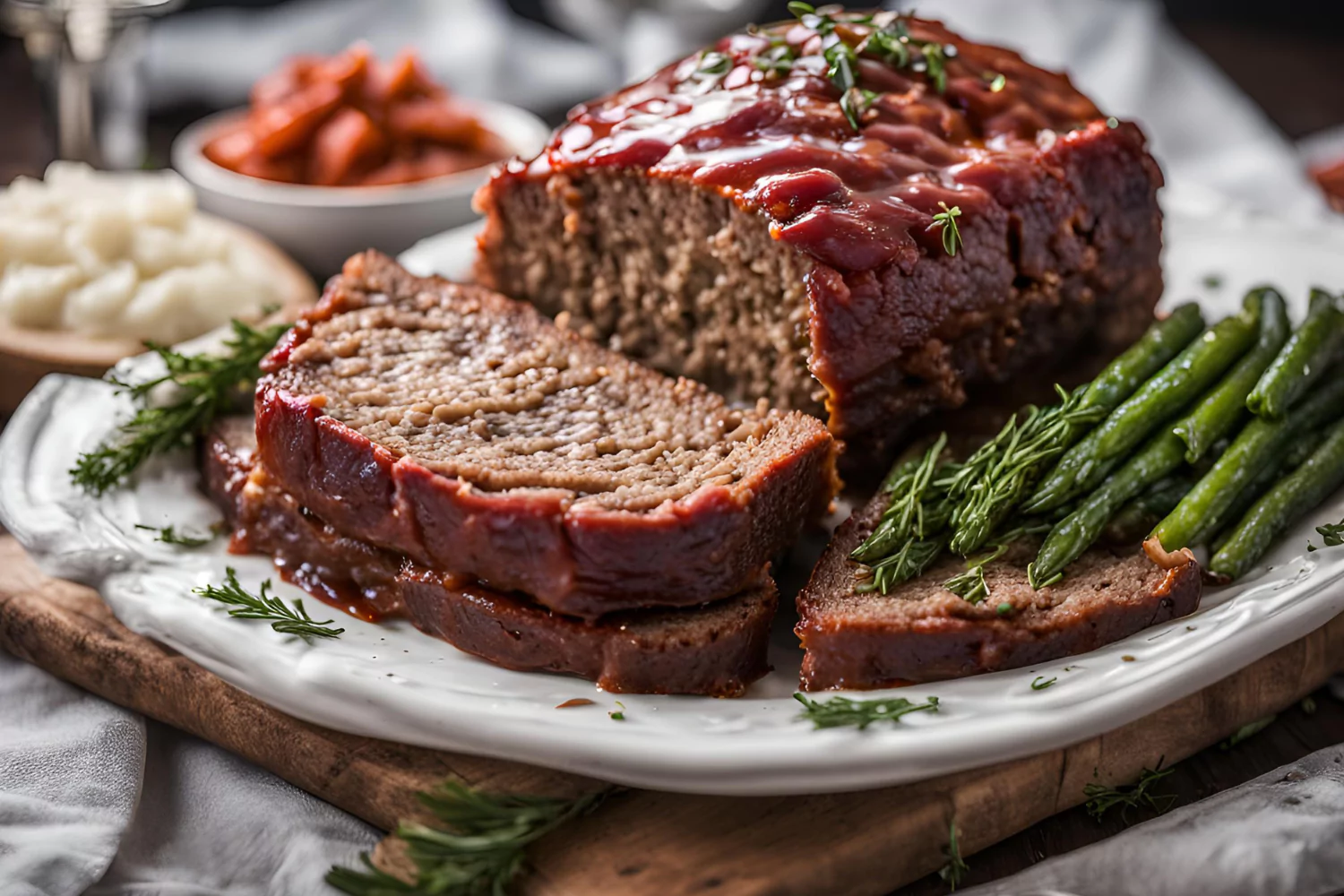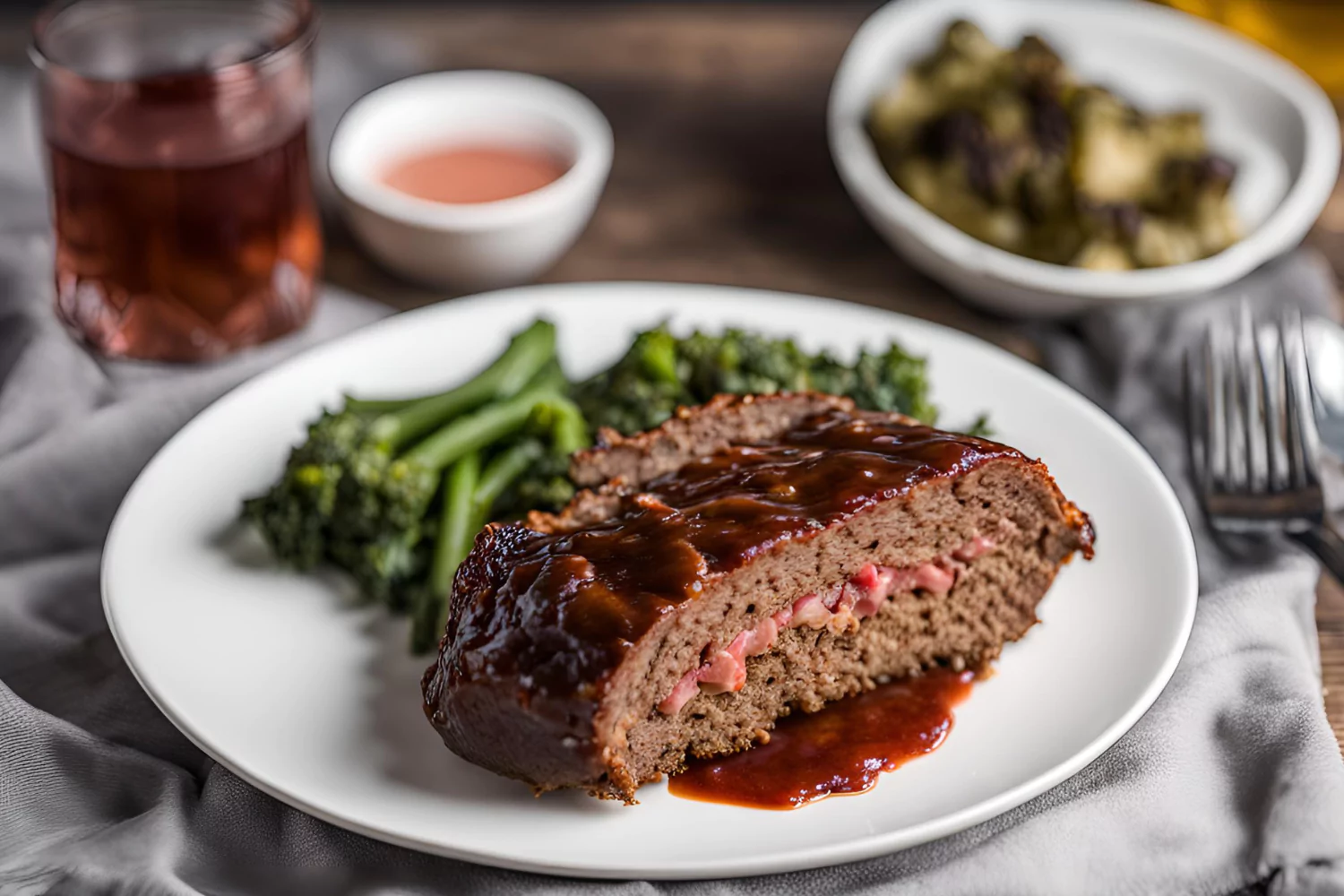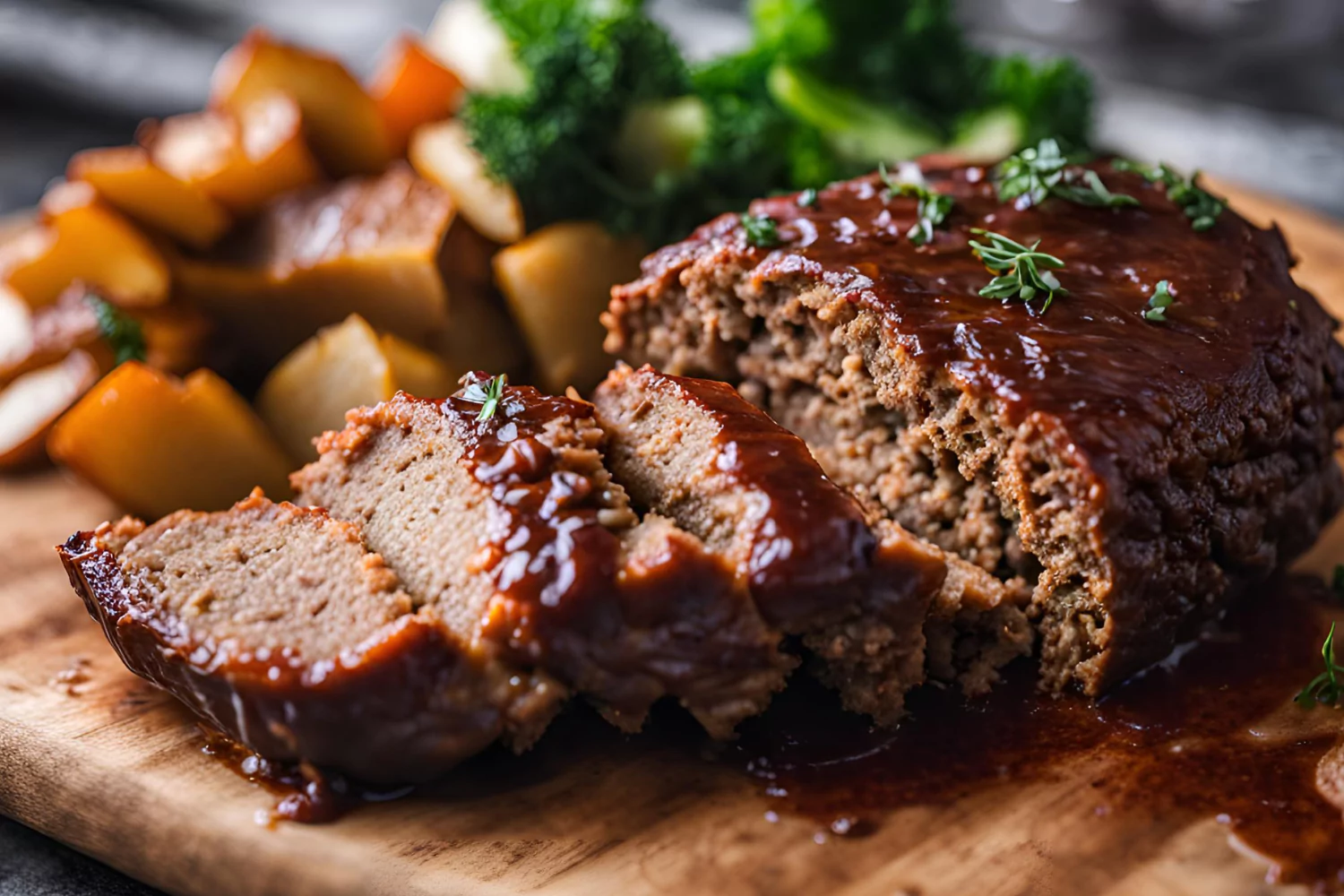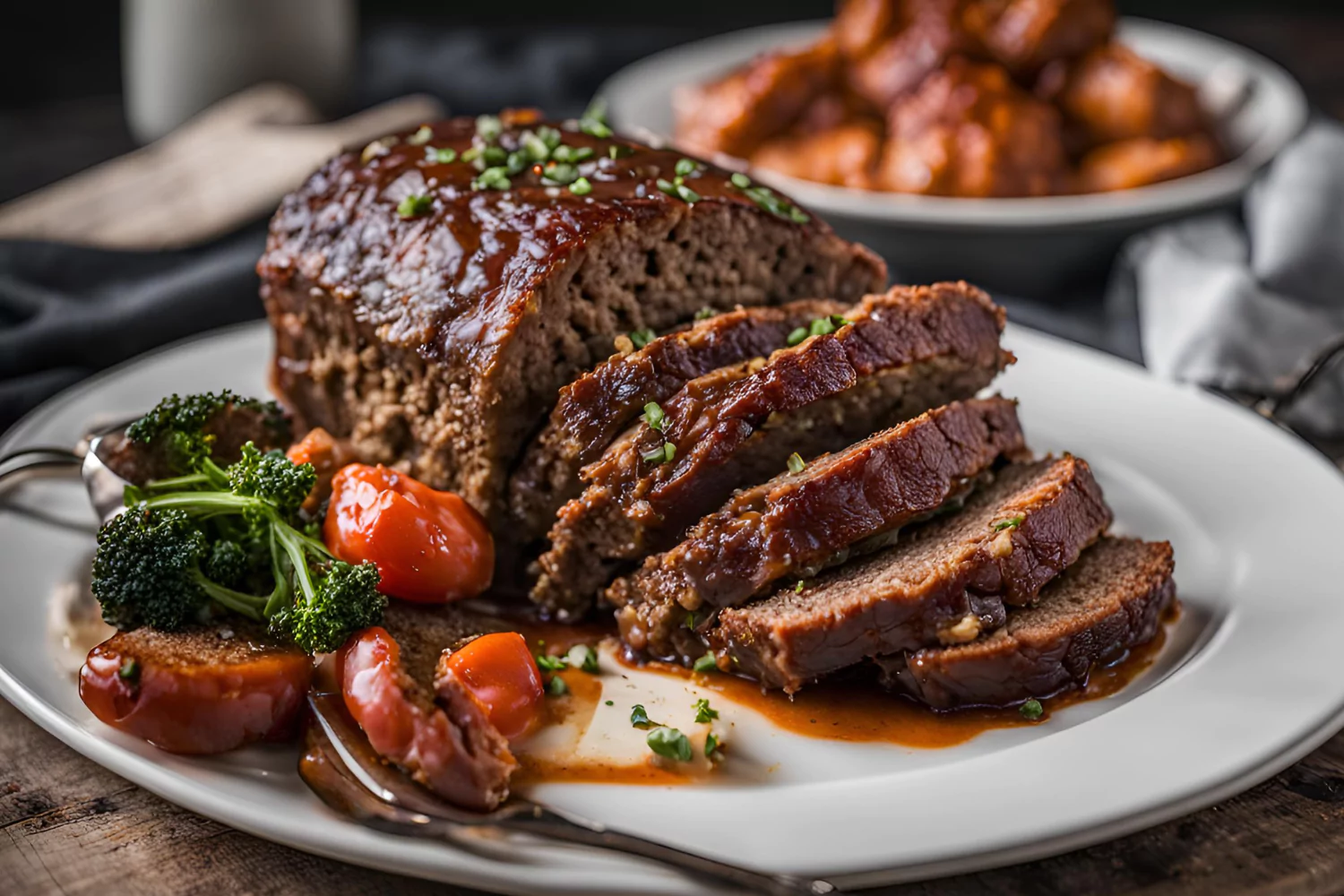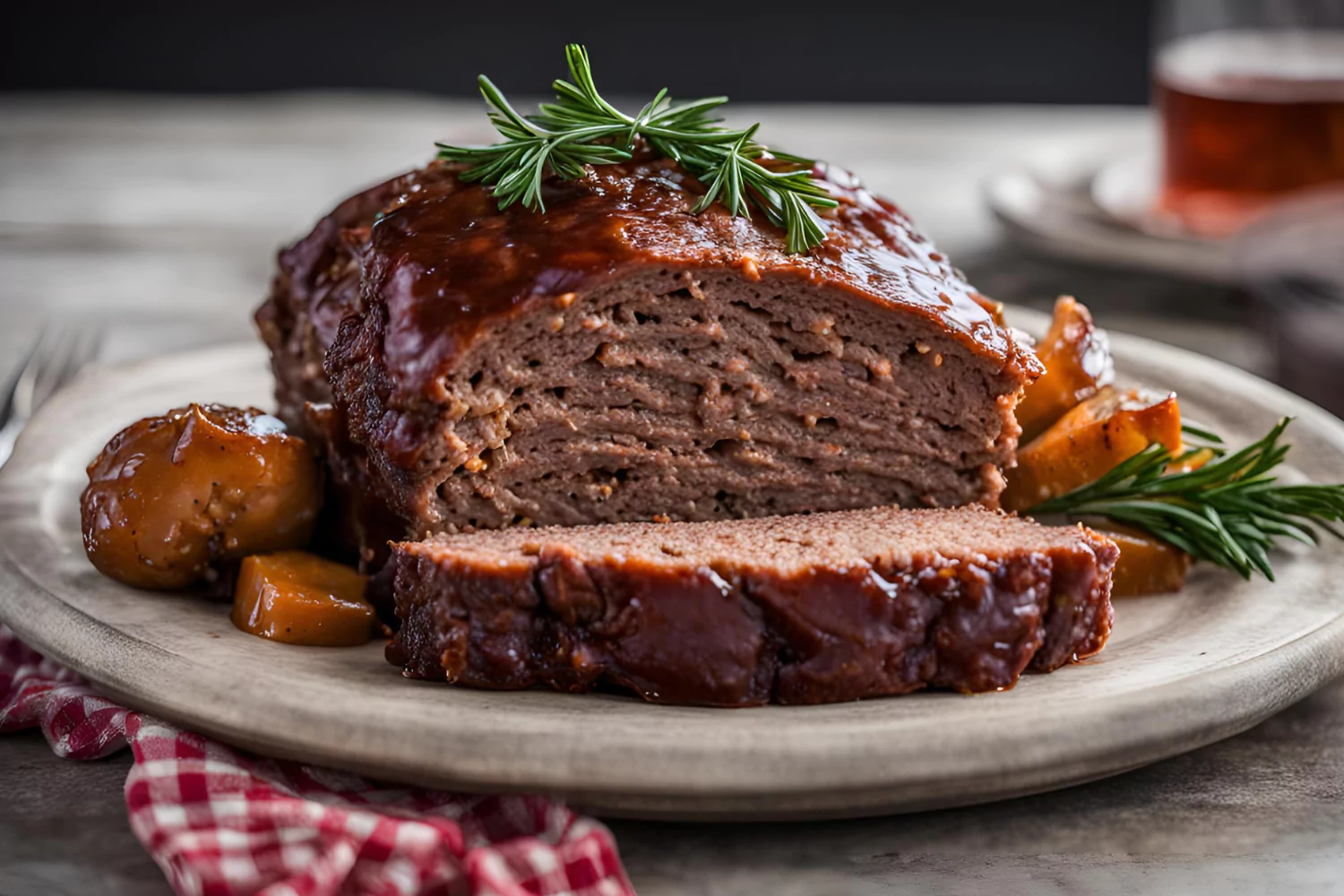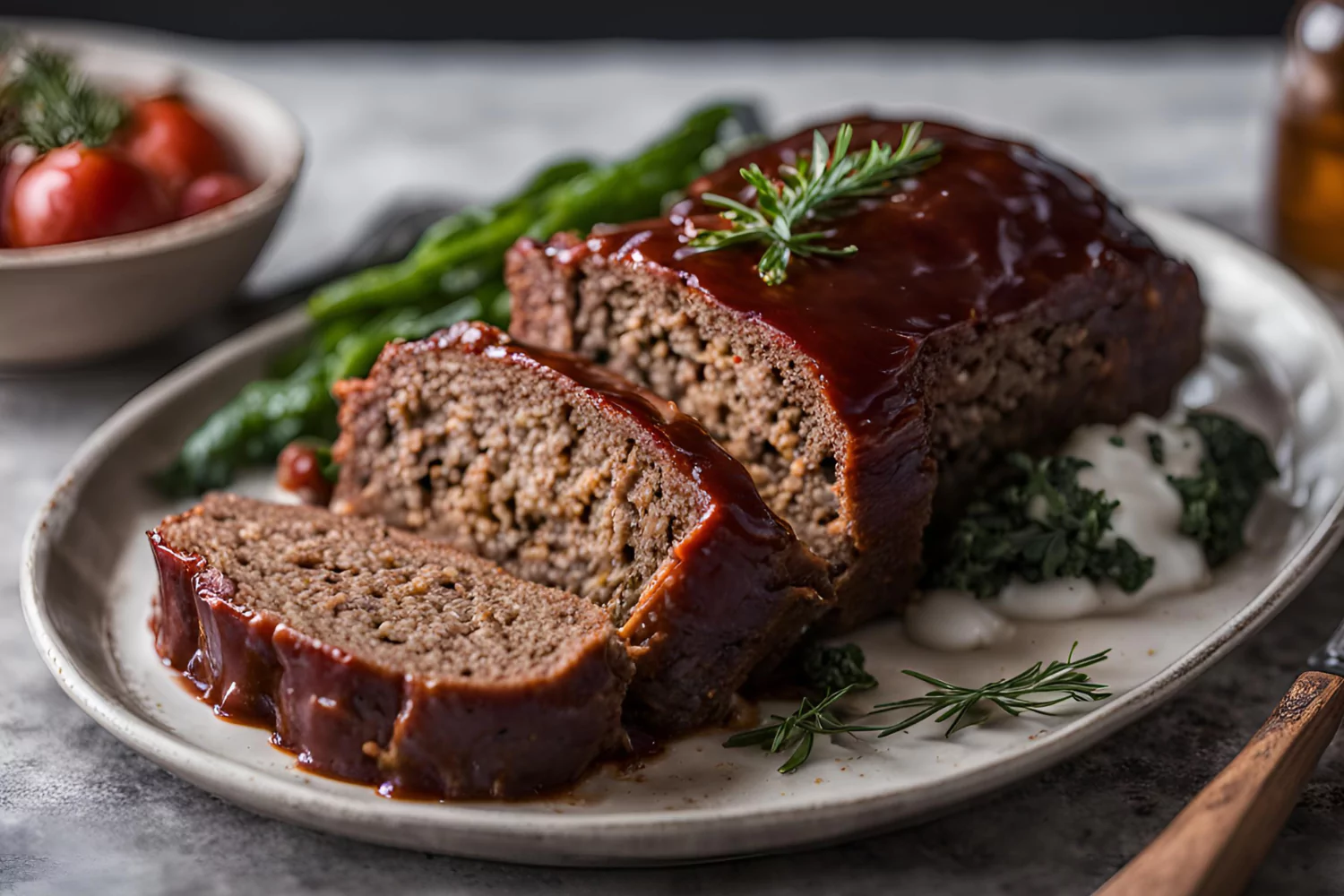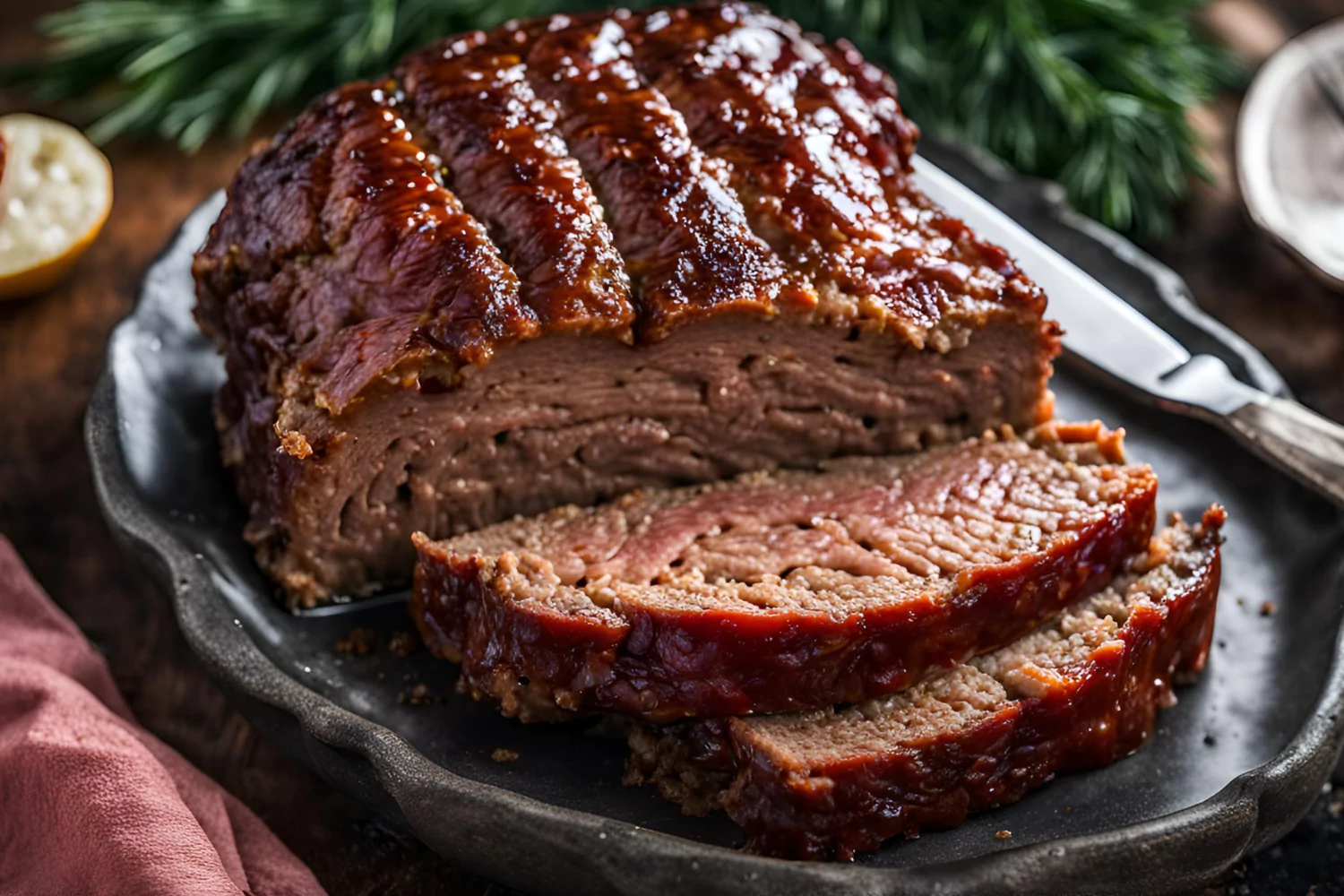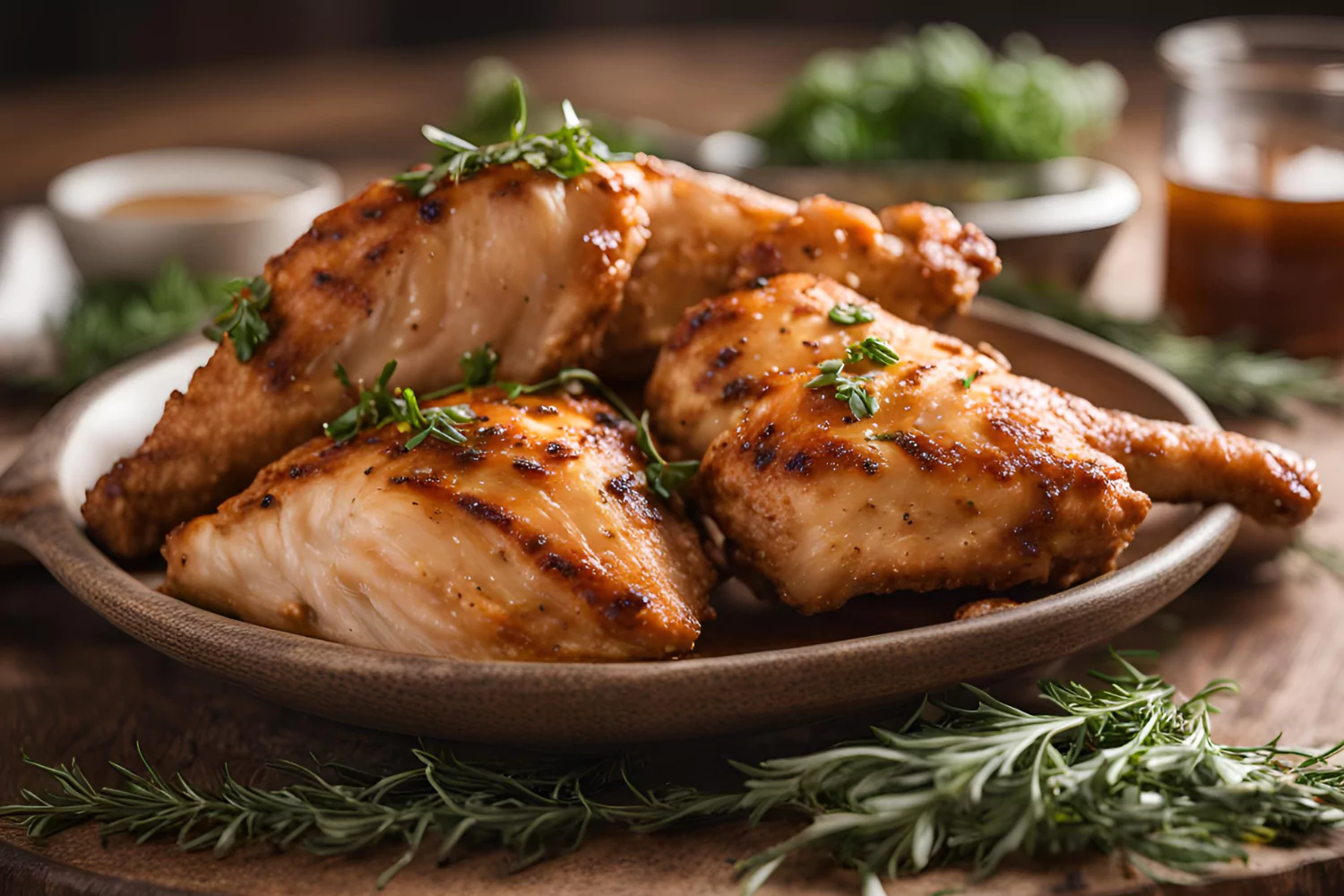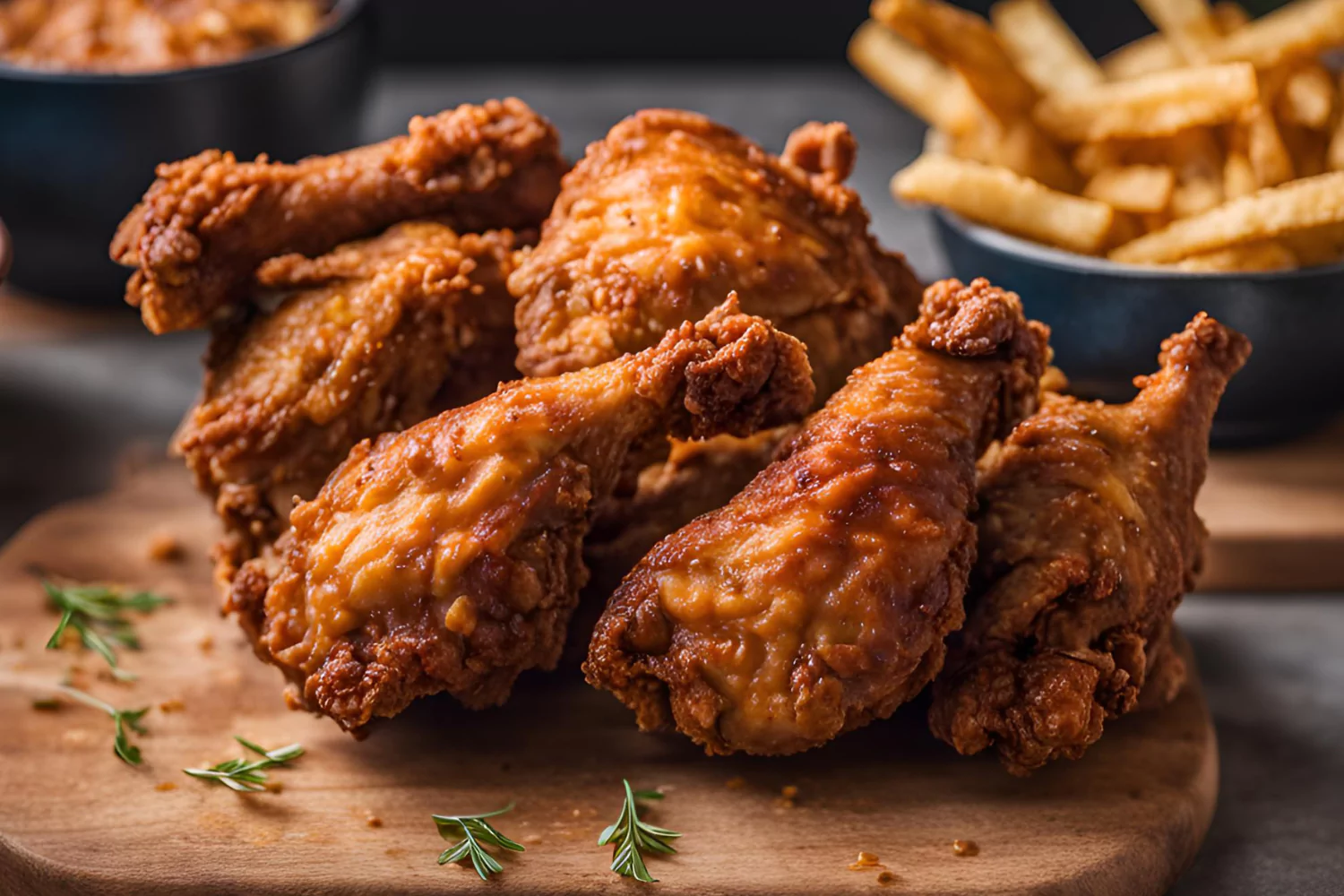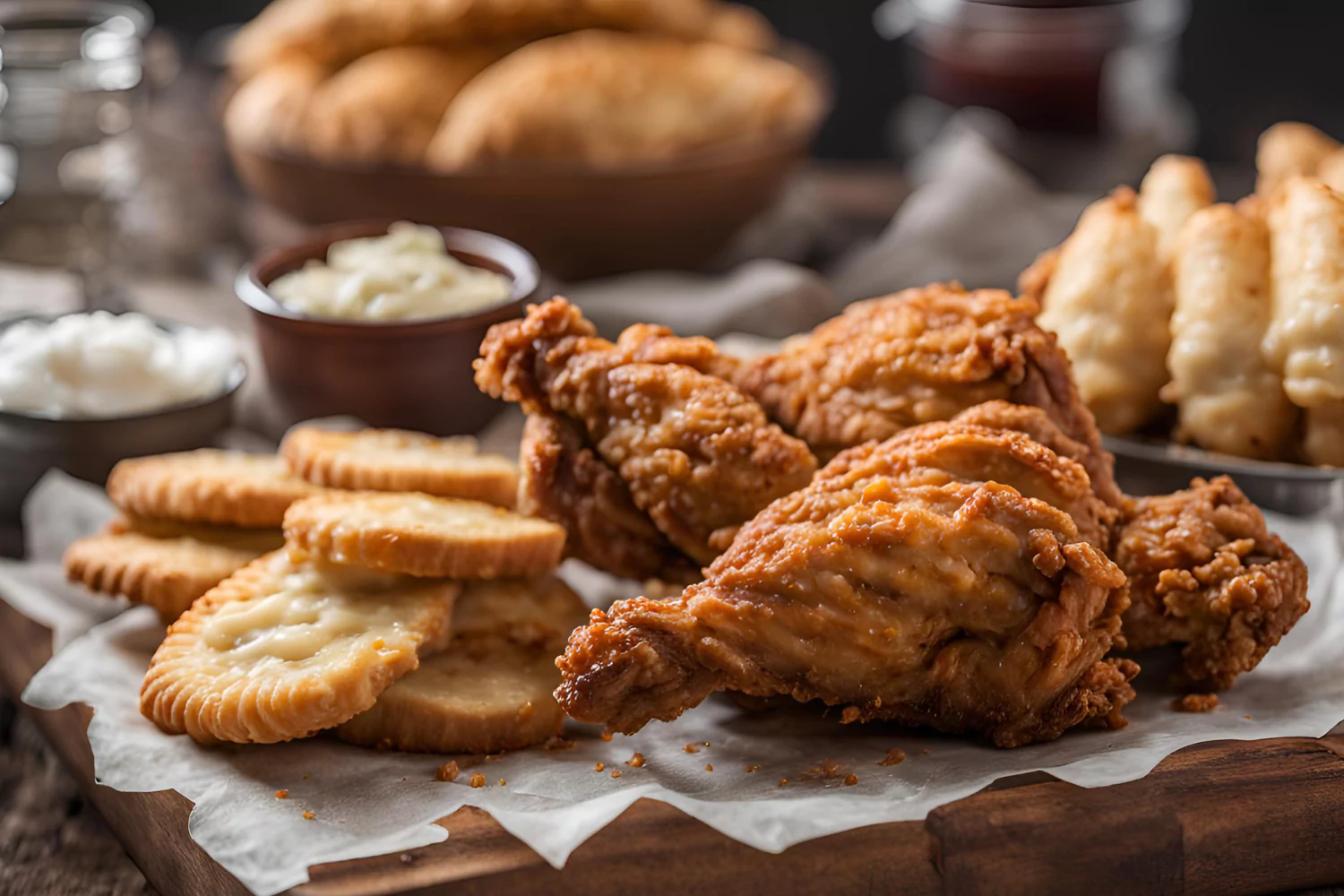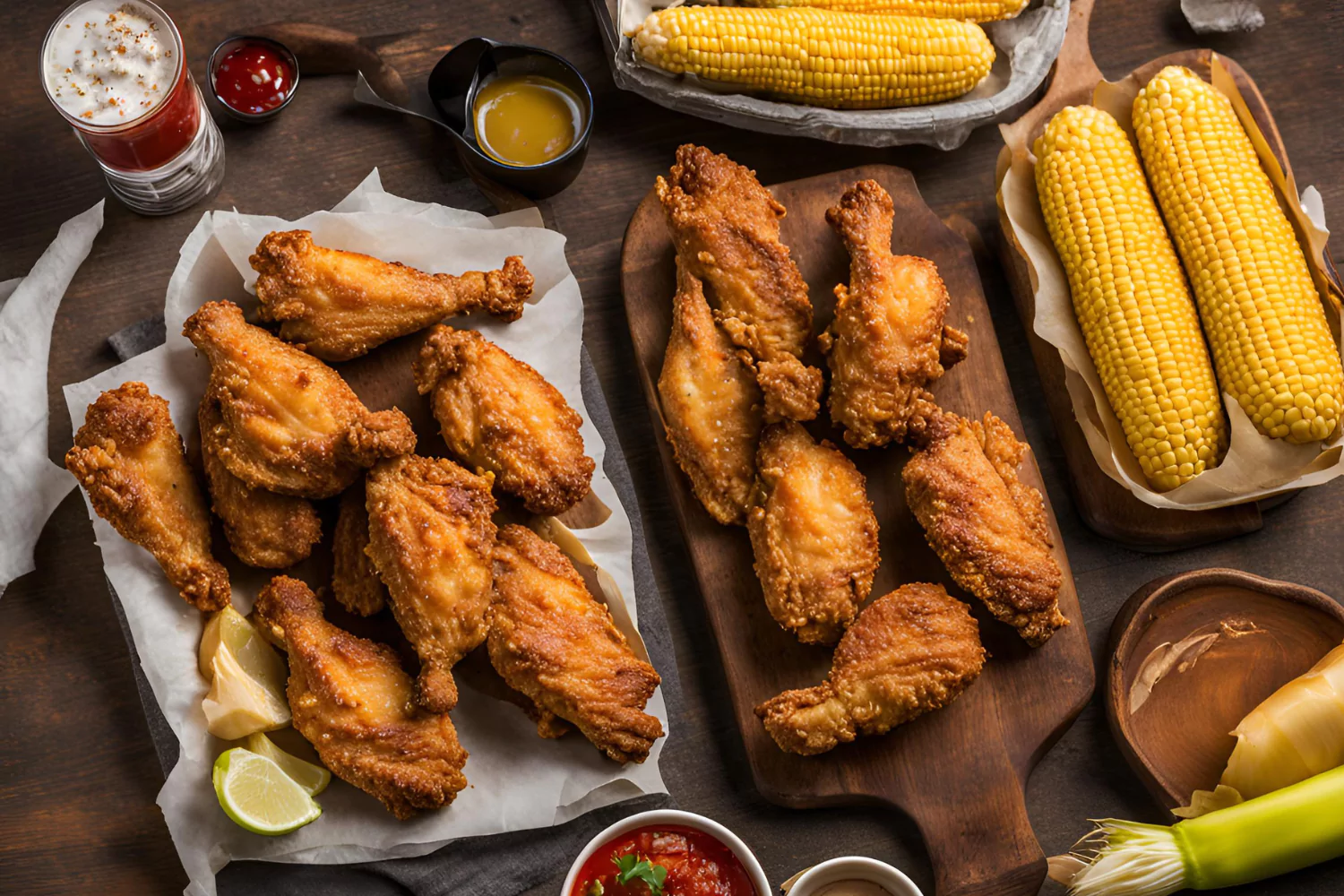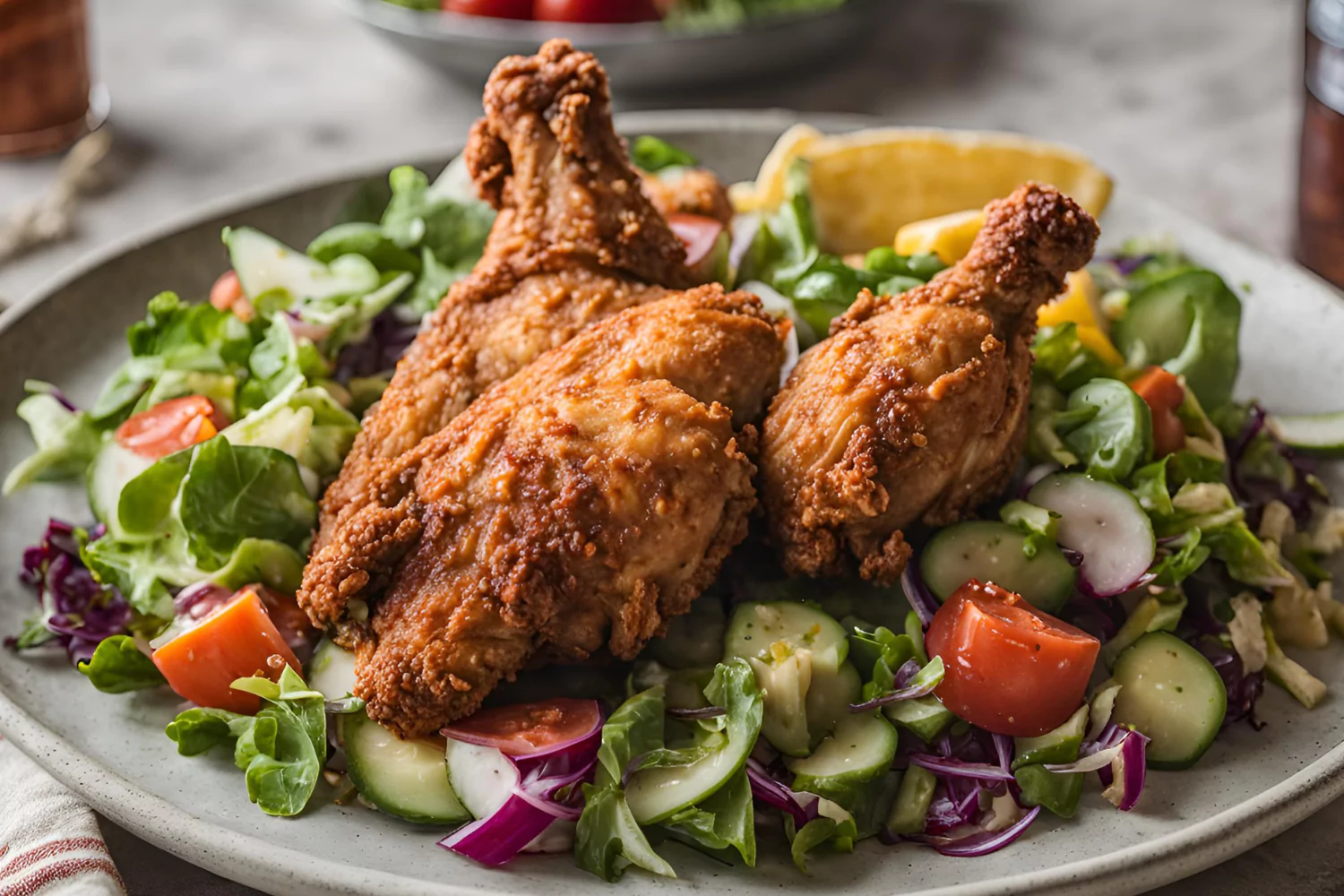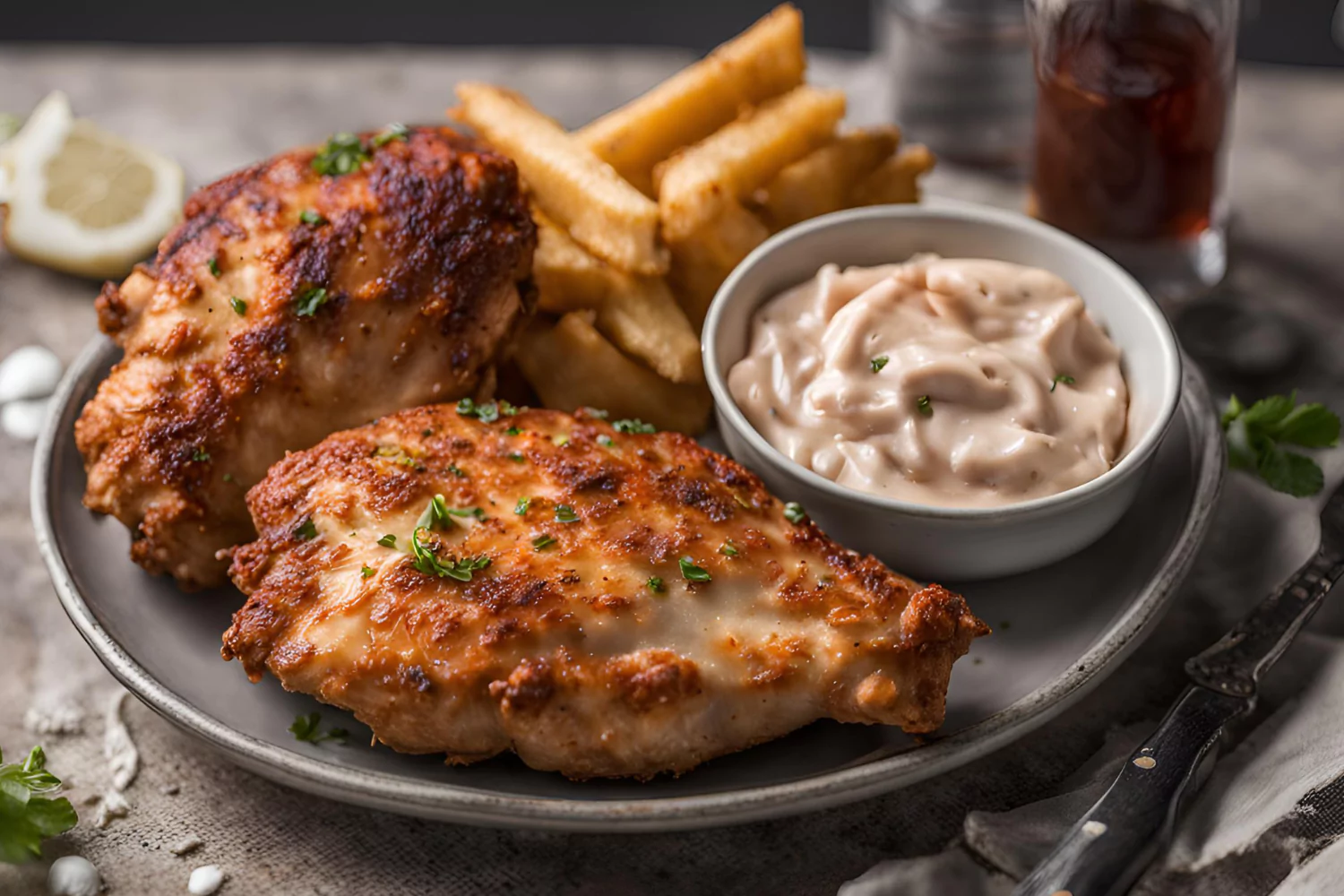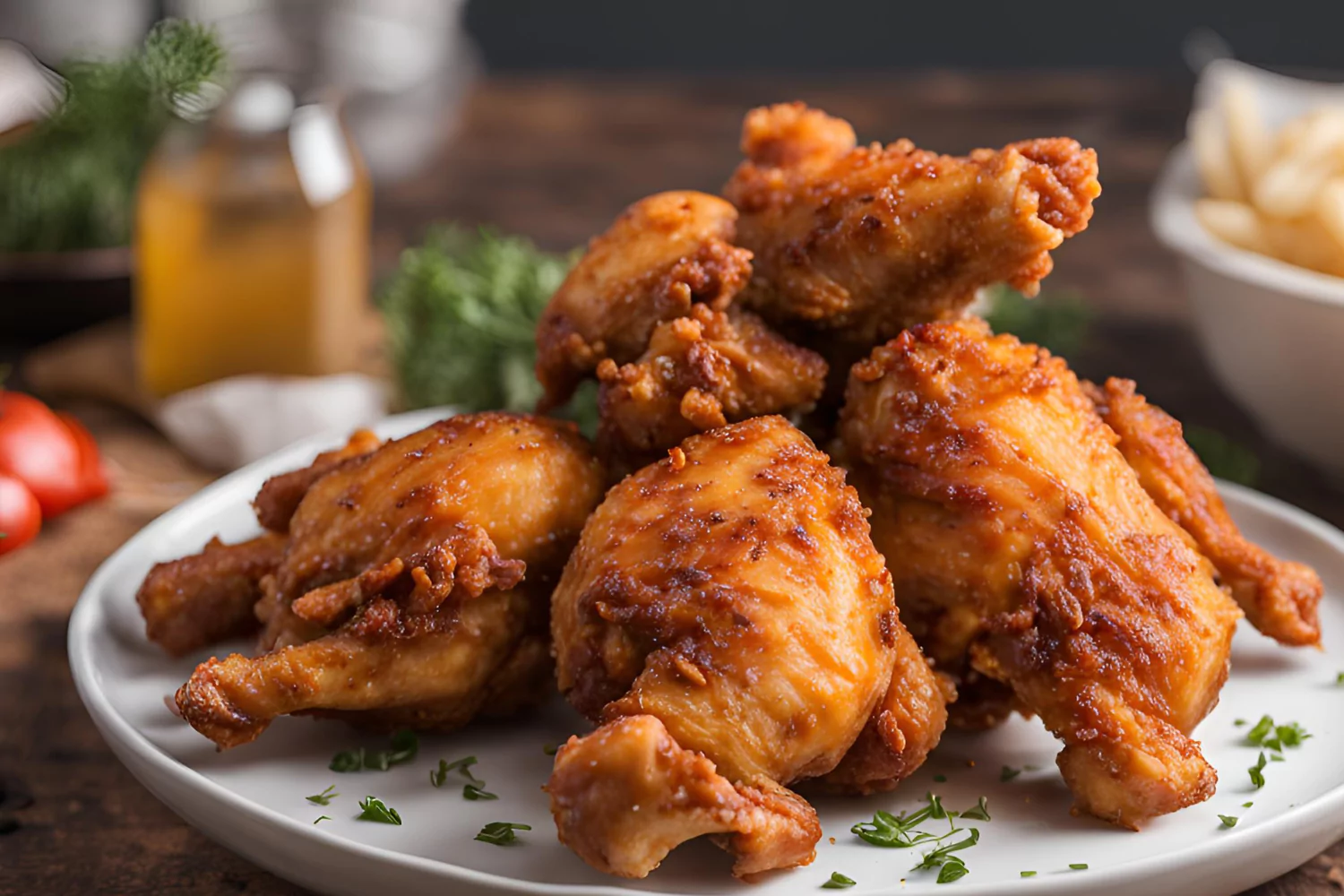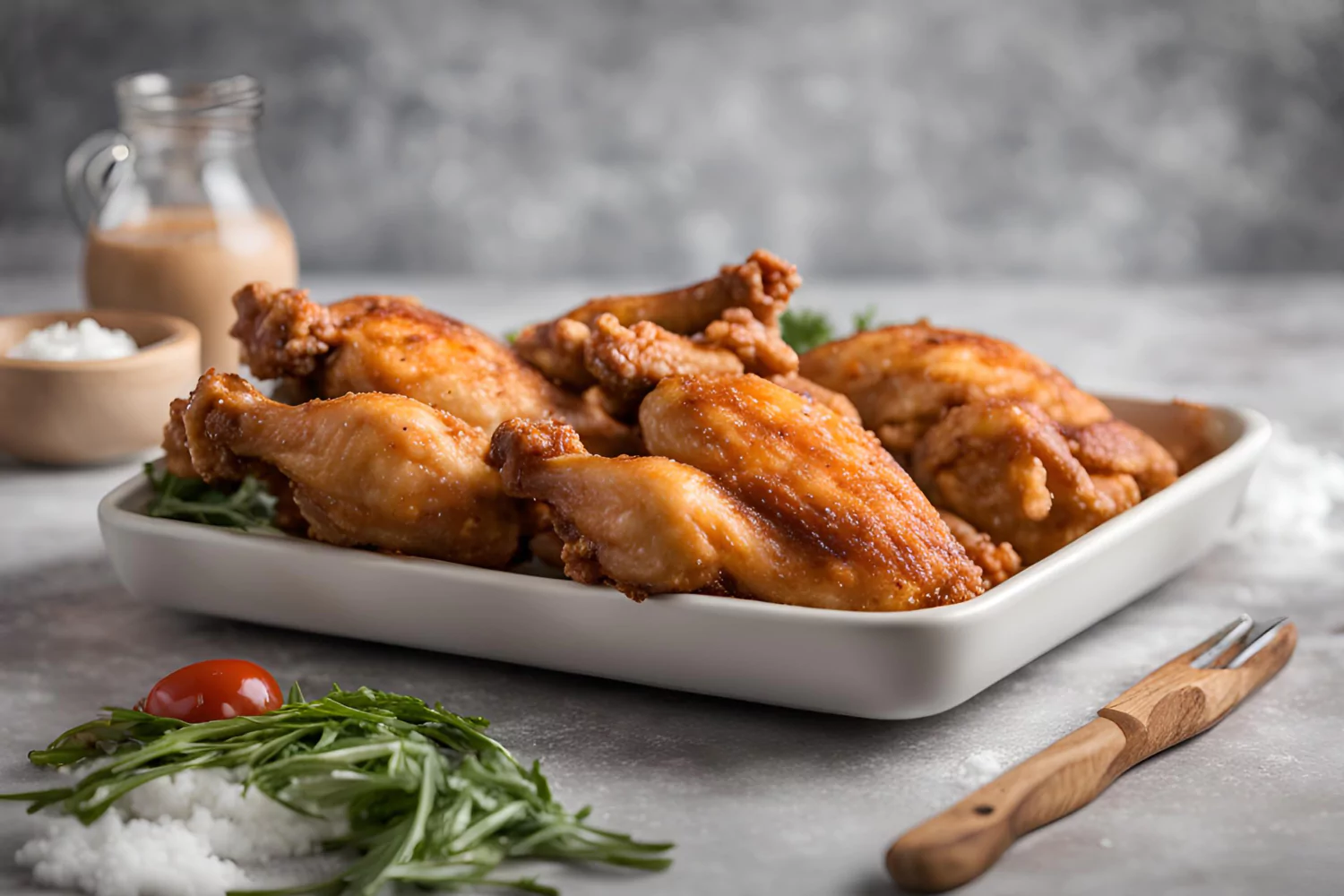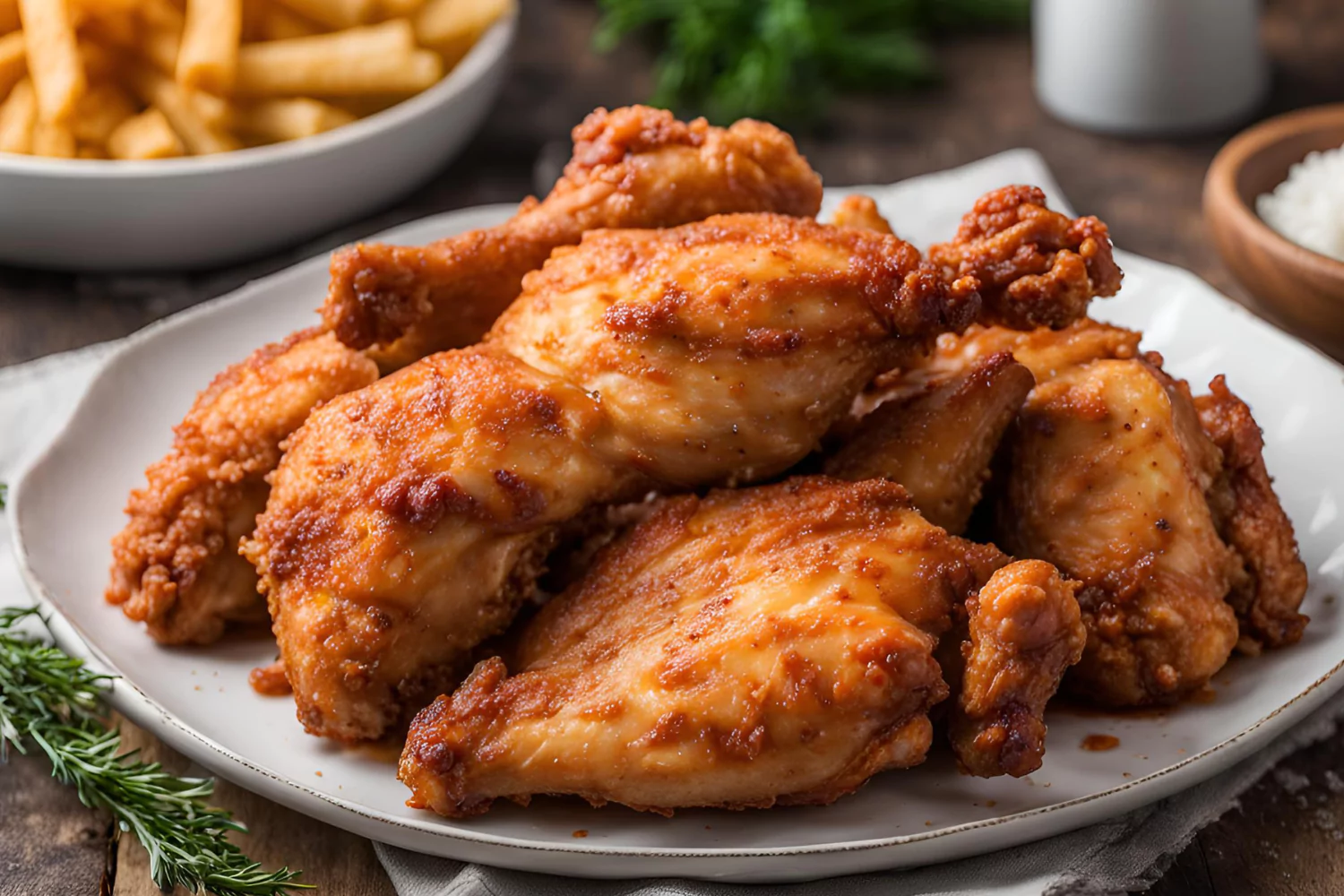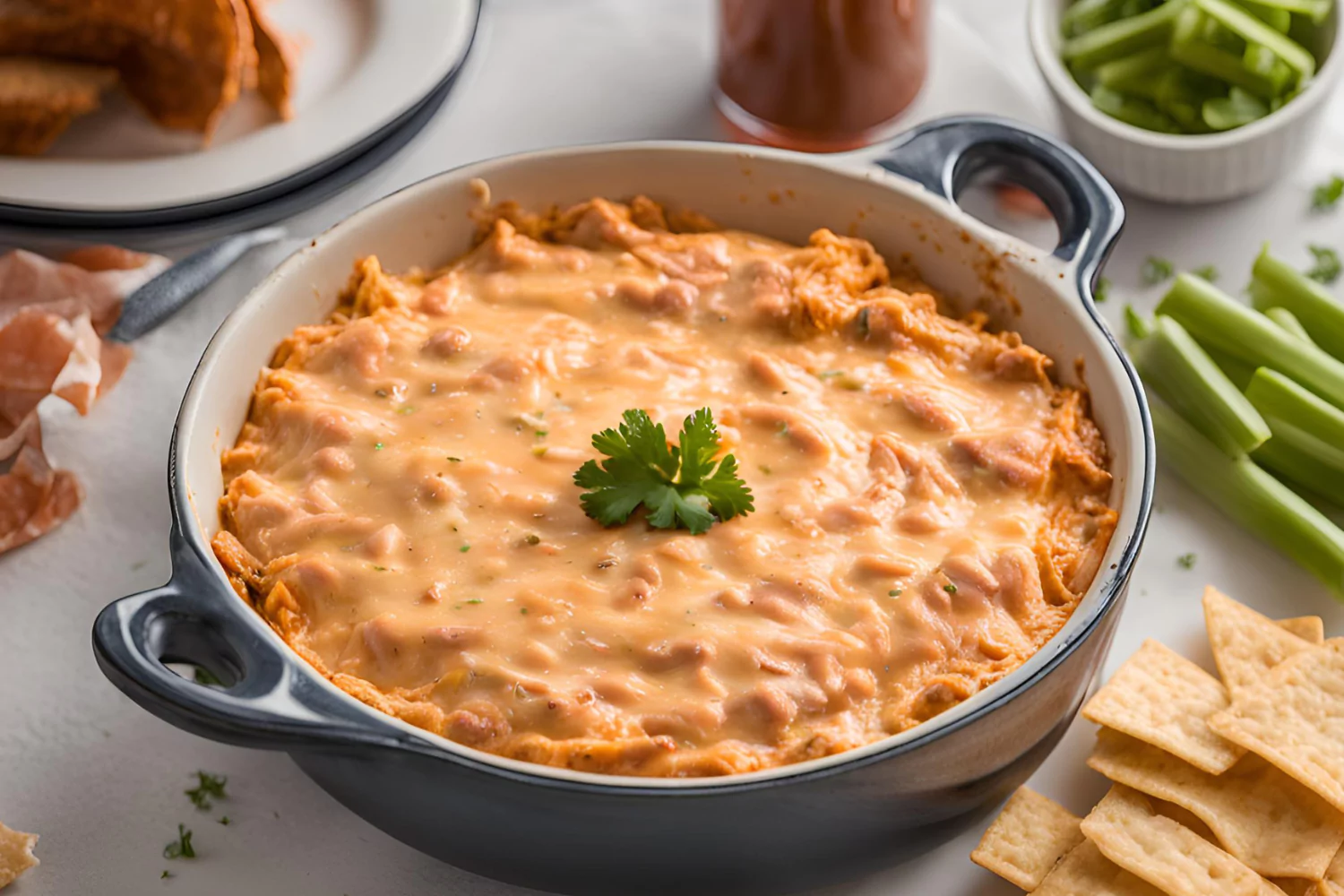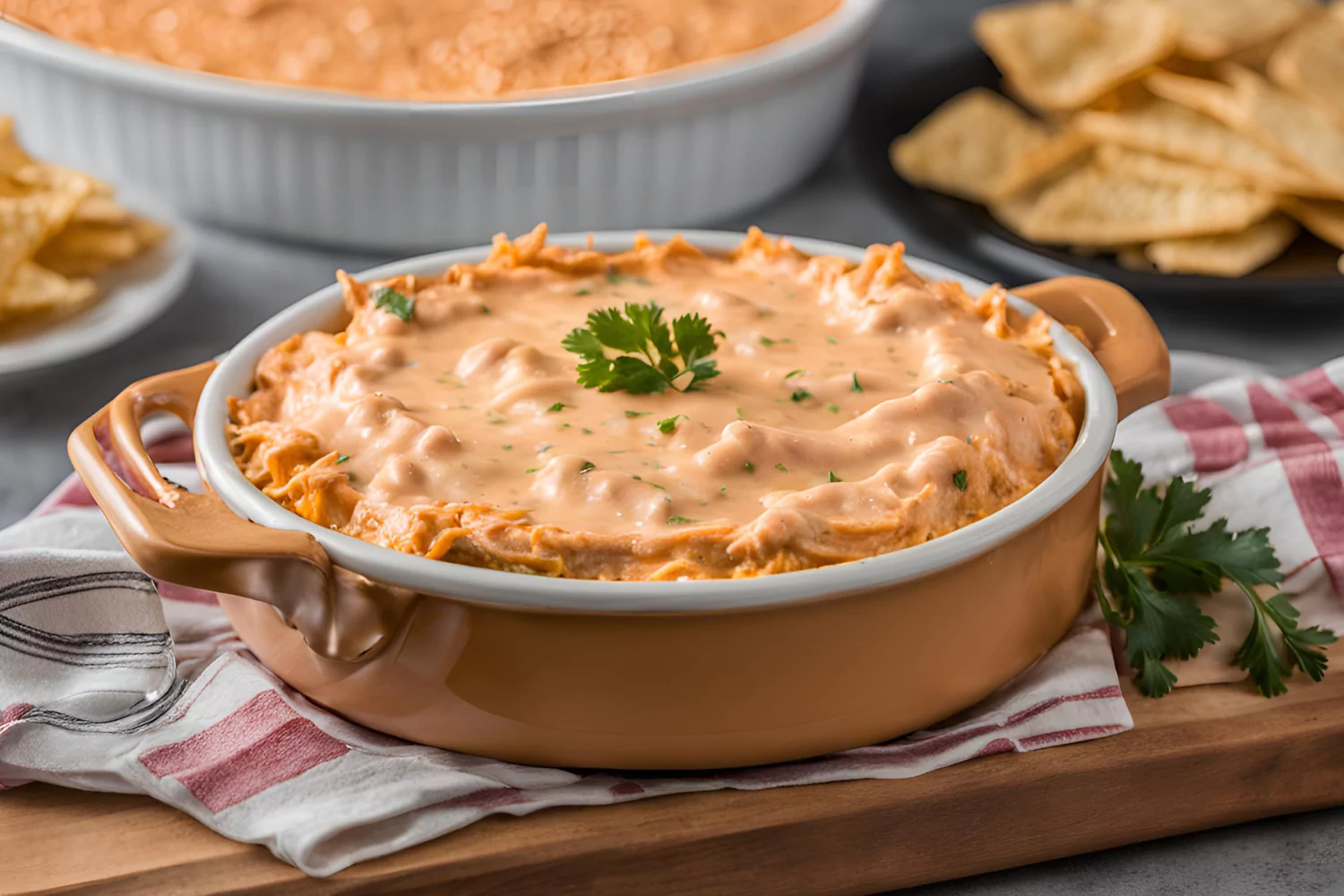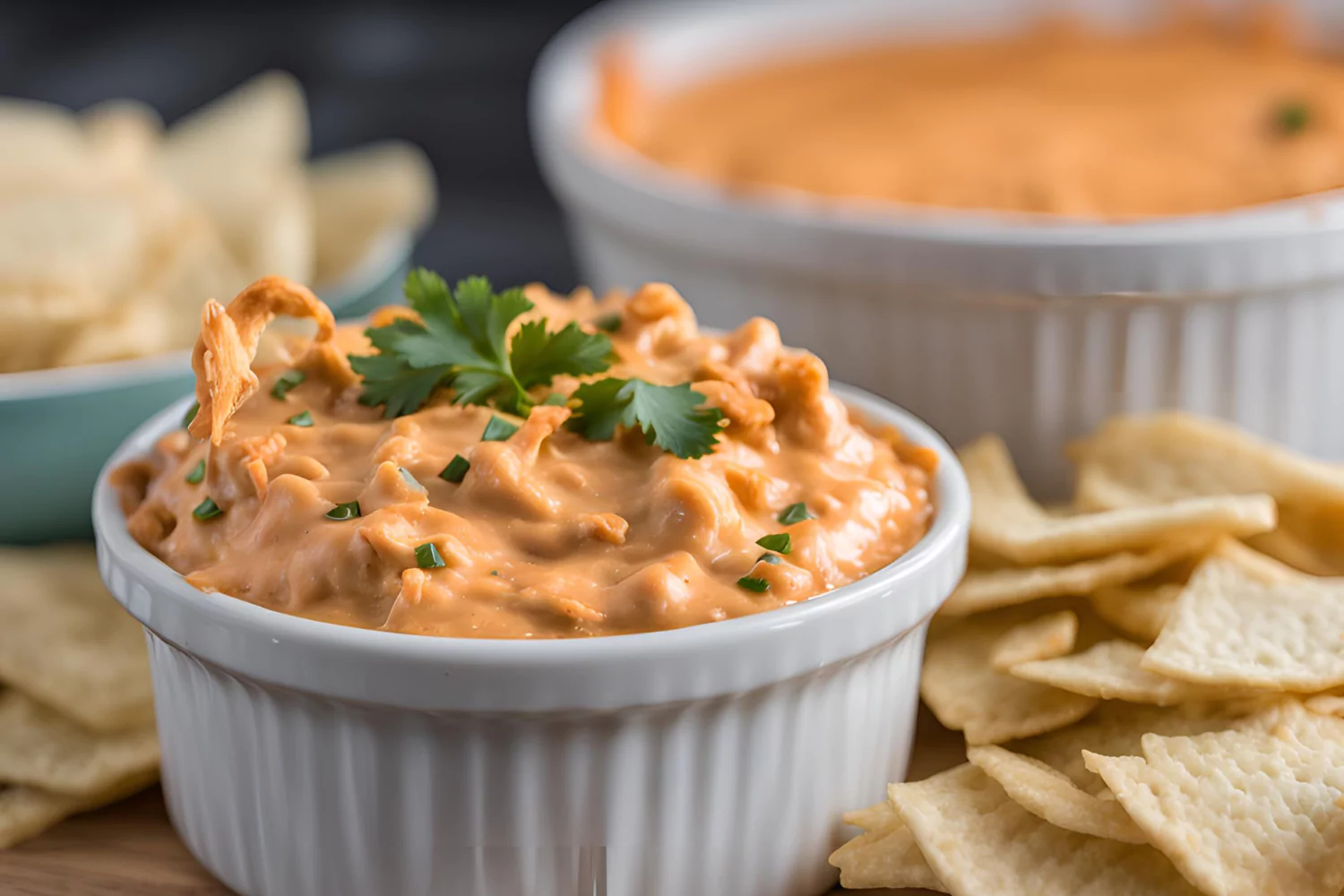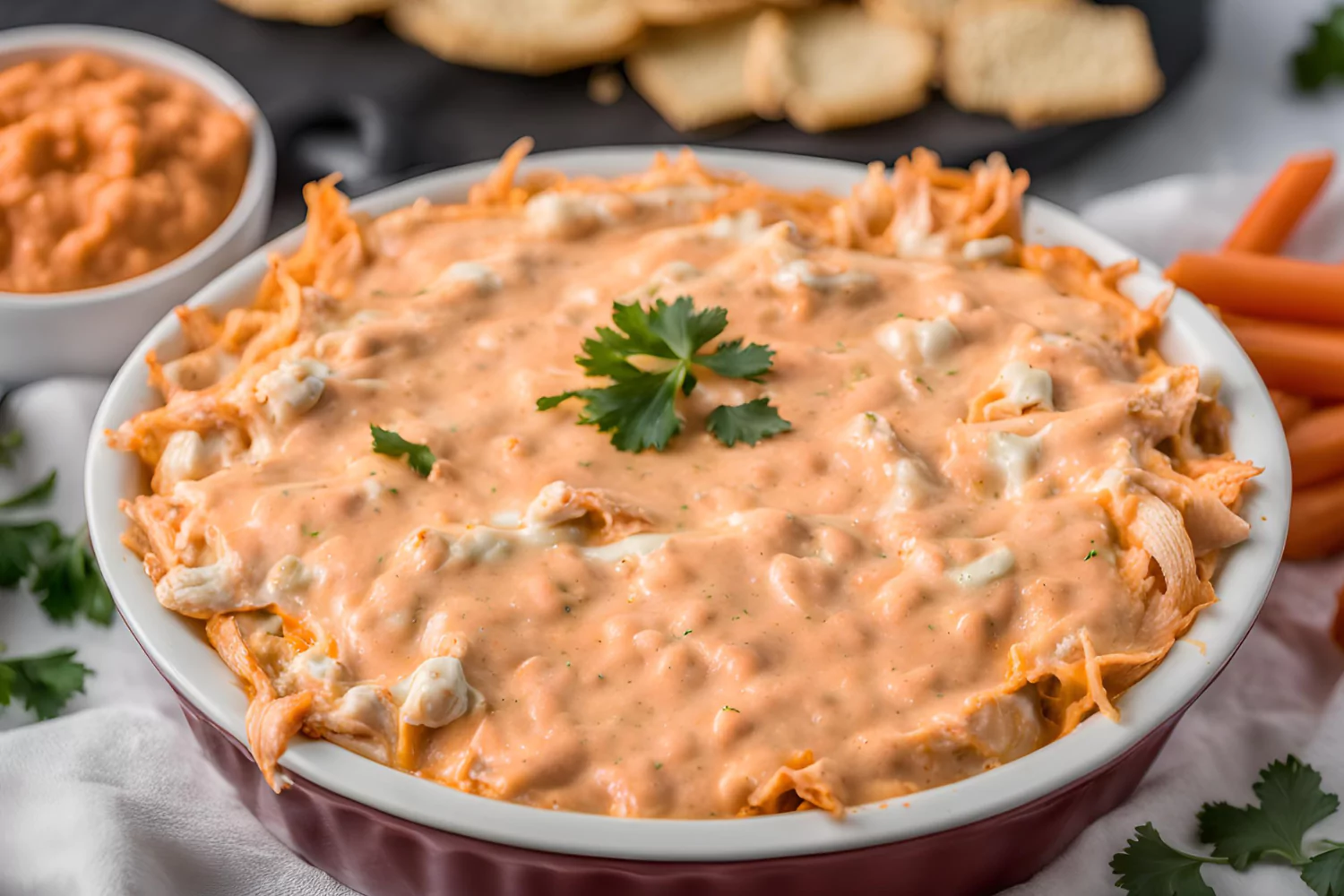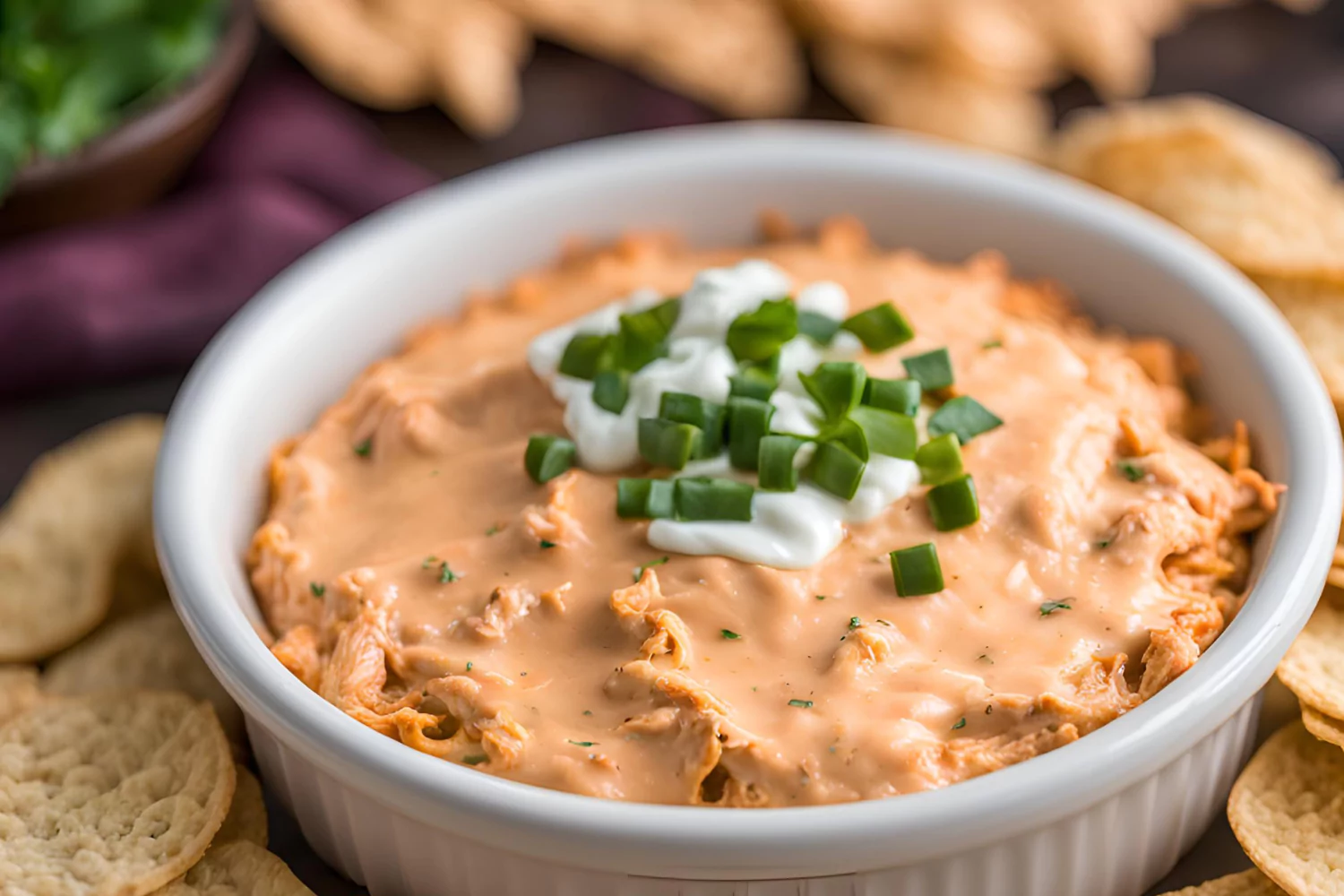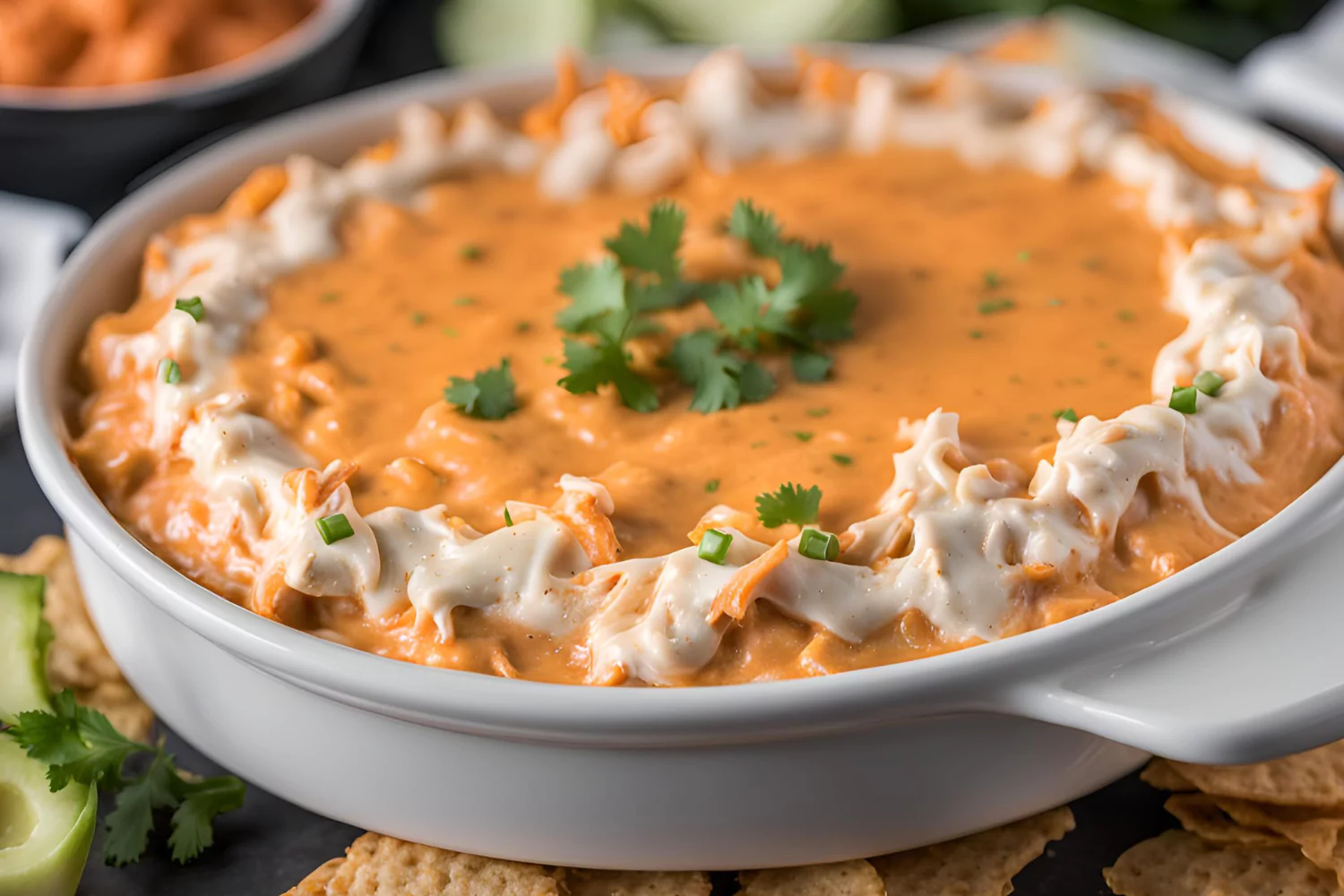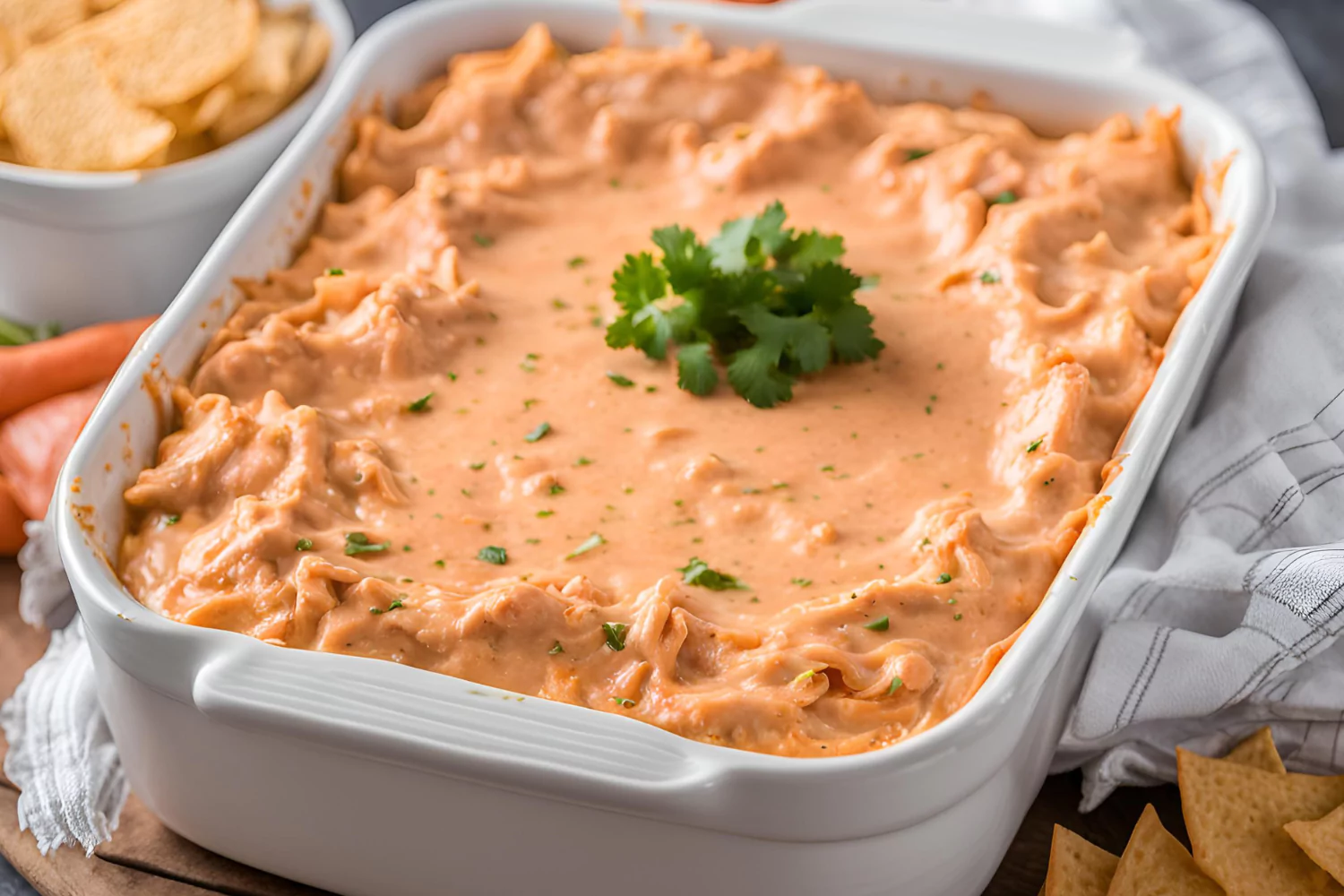Cooking air fry frozen chicken breast is a game-changer for quick, healthy, and delicious meals. You don’t need to thaw the chicken, and the air fryer ensures a juicy, flavorful result every time. This guide will walk you through the process step-by-step, offering tips, tricks, and variations to make your air fry frozen chicken breast perfect.
Introduction to Air Fry Frozen Chicken Breast
Air frying has revolutionized the way we cook, offering a healthier and faster alternative to traditional frying. When it comes to air frying frozen chicken breast, the benefits are plentiful. Not only do you save time by skipping the thawing process, but you also achieve a perfectly cooked, juicy chicken breast with minimal effort.
The rapid hot air circulation in an air fryer ensures even cooking and a crispy exterior, making it an ideal method for busy weeknights or meal prepping. Plus, you can experiment with various seasonings and sauces to suit your taste.
What You Need to Get Started
Before diving into the cooking process, let’s gather all the necessary equipment and ingredients. Here’s what you’ll need:
- Air Fryer: Any model works, but ensure it’s large enough to fit the chicken breasts without overcrowding.
- Tongs: For safely handling the hot chicken.
- Meat Thermometer: Essential for checking if the chicken is cooked to a safe internal temperature of 165°F.
- Chicken Breasts: Boneless, skinless, and frozen.
- Olive Oil: Helps the seasoning stick and adds a bit of crispiness.
- Spices: Common options include paprika, garlic powder, salt, and pepper, but feel free to get creative.
Prepping the Frozen Chicken Breast
You might wonder, should you thaw frozen chicken breasts before air frying? The answer is no. Air fryers are designed to cook food from frozen, saving you time and effort.
Preheat the Air Fryer: Preheating your air fryer is crucial for even cooking. Set your air fryer to 375°F and let it preheat for about 3-5 minutes.
Season the Chicken: Lightly spray or brush the frozen chicken breasts with olive oil. This helps the seasoning adhere better. Then, sprinkle your chosen spices evenly on both sides of the chicken.
Next, it’s time to cook these seasoned frozen chicken breasts to perfection.
Cooking Process
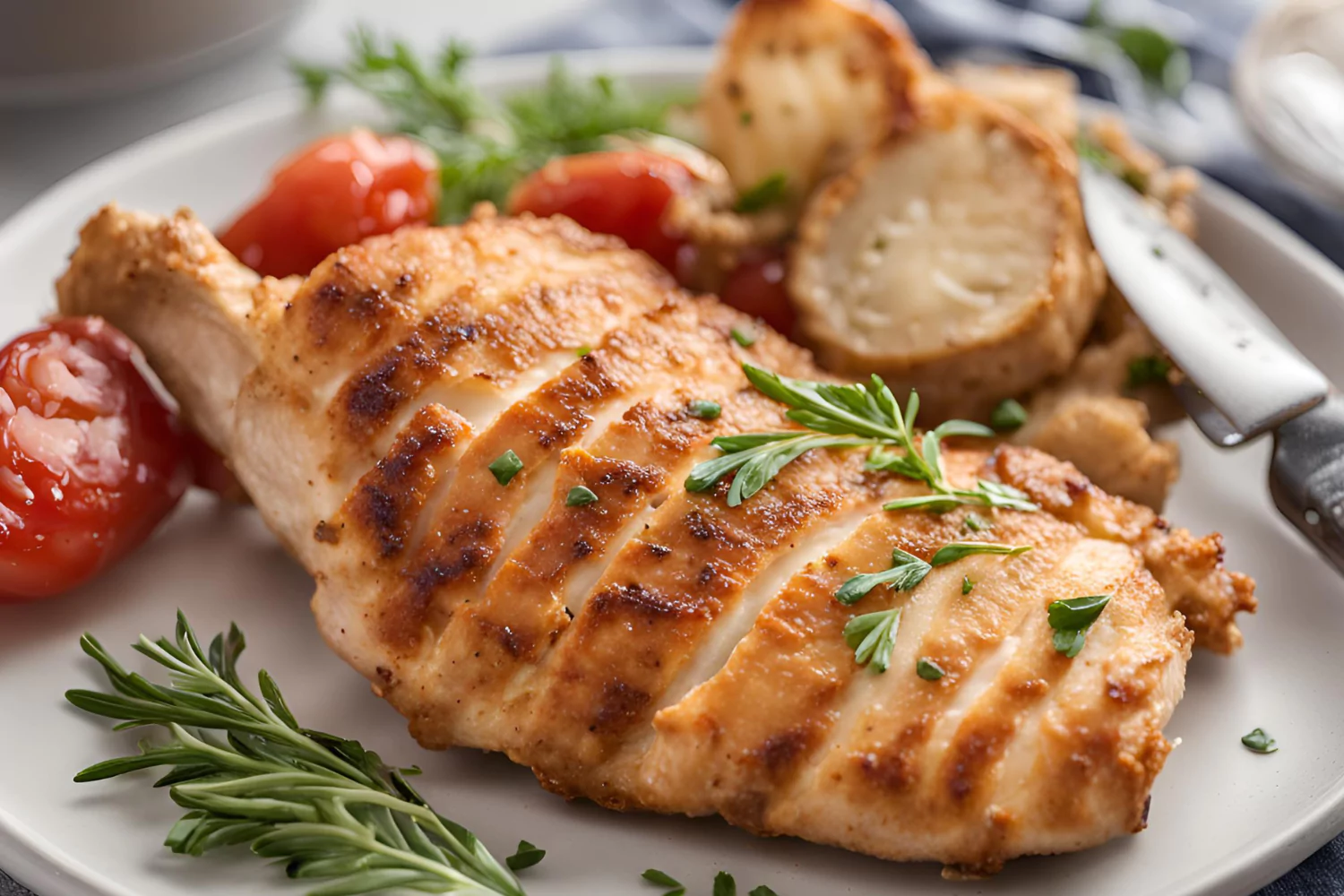
Step-by-Step Guide to Air Fry Frozen Chicken Breast
Cooking frozen chicken breast in the air fryer is straightforward. Follow these steps to ensure a delicious, juicy result every time.
1. Preheat the Air Fryer:
Preheating ensures that the chicken cooks evenly from the start. Set your air fryer to 375°F and let it run empty for about 3-5 minutes. For more on mastering air frying techniques, visit WebMD.
2. Season the Chicken:
While the air fryer preheats, prepare your chicken. Lightly spray or brush the frozen chicken breasts with olive oil. This helps the seasoning stick and adds a bit of crispiness. Sprinkle your chosen spices evenly on both sides of the chicken. Popular seasonings include paprika, garlic powder, salt, and pepper. Add a tiny bit of cayenne pepper for spice.
3. Place the Chicken in the Air Fryer:
Fill the air fryer basket with the seasoned chicken breasts arranged in a single layer. Ensure there’s enough space for the hot air to circulate around each piece. Your air fryer’s size will determine whether you need to cook in batches or not.
4. Cook the Chicken:
Set the timer for 30 minutes. Halfway through the cooking time, around the 15-minute mark, open the air fryer and flip the chicken breasts using tongs. This ensures even cooking on both sides. Using a meat thermometer, determine the chicken’s internal temperature. The chicken is done when it reaches 165°F. Depending on the size and thickness of your chicken breasts, cooking times may vary slightly.
5. Let the Chicken Rest:
Once the chicken reaches the proper internal temperature, remove it from the air fryer and let it rest on a plate for about 5 minutes. This resting period allows the juices to redistribute, resulting in juicier chicken.
Using a Meat Thermometer
Using a meat thermometer is crucial for ensuring your chicken is cooked to a safe temperature. Place the thermometer in the area of the chicken breast that is the thickest. The USDA recommends an internal temperature of 165°F for safe consumption. This step is especially important when cooking from frozen, as it ensures the chicken is thoroughly cooked without overcooking the exterior.
Tips for Even Cooking
To avoid uneven cooking, make sure the chicken breasts are similar in size and thickness. If they’re different sizes, you may need to adjust the cooking time. Additionally, flipping the chicken halfway through the cooking process helps achieve a uniformly cooked piece of meat.
How to Keep the Chicken Juicy
To keep your air-fried chicken juicy, avoid overcooking it. Monitor the internal temperature closely and remove the chicken from the air fryer as soon as it reaches 165°F. Letting the chicken rest for a few minutes after cooking also helps retain its juices.
Tips and Tricks
Ensuring Perfectly Cooked Chicken Every Time
Achieving perfectly cooked air fryer chicken breast involves a few handy tips and tricks that can make all the difference.
Use a Meat Thermometer
One of the best ways to ensure your chicken is perfectly cooked is by using a meat thermometer. This tool helps you avoid the guesswork and ensures the chicken reaches an internal temperature of 165°F, which is safe for consumption. Always check the temperature at the thickest part of the breast.
Tips for Even Cooking
For even cooking, make sure the chicken breasts are of similar size and thickness. If you have varying sizes, consider pounding them to an even thickness before freezing. This ensures they cook at the same rate. Additionally, arranging the chicken in a single layer without overcrowding the air fryer basket allows hot air to circulate evenly.
How to Keep the Chicken Juicy
To keep your air-fried chicken juicy, avoid overcooking. Monitor the internal temperature closely and remove the chicken as soon as it hits 165°F. After cooking, let the chicken rest for about 5 minutes. This resting period helps the juices redistribute throughout the meat, making it more succulent.
Seasoning Tips
When seasoning frozen chicken breasts, oil helps the spices adhere better. Lightly spray or brush the chicken with olive oil before adding your spices. You can experiment with different seasoning blends to suit your taste. For instance, try a mix of smoked paprika, garlic powder, and Italian herbs for a flavorful twist.
Preheat Your Air Fryer
Always preheat your air fryer before cooking. This step ensures the chicken cooks evenly from the start. Preheating usually takes about 3-5 minutes and is well worth the effort for consistent results.
Serving Suggestions

Delicious Ways to Serve Air Fried Chicken Breast
Now that you have perfectly cooked air-fried chicken breast, let’s explore some delicious serving ideas.
Serving with Sides
Pair your chicken with a variety of sides to create a balanced meal. Some popular options include:
- Air Fryer Green Beans: Crispy and healthy, green beans make a great side dish.
- Air Fryer Mac and Cheese: Comfort food at its best, this cheesy dish complements the chicken well.
- Air Fryer Stuffed Mushrooms: A savory and satisfying addition to your meal.
Incorporating into Meals
Air-fried chicken breasts are versatile and can be used in various dishes. Here are some ideas:
- Salads: Slice the chicken and add it to a fresh garden salad with your favorite dressing.
- Wraps: Combine the chicken with lettuce, tomatoes, and a light sauce in a whole wheat wrap.
- Tacos: Use the chicken as a protein base in tacos, adding toppings like avocado, salsa, and cheese.
Sauce and Garnish Ideas
Elevate your chicken by serving it with different sauces and garnishes. Here are some suggestions:
- Garlic Butter Sauce: Melt butter with minced garlic and pour over the chicken for a rich flavor.
- Lemon Herb Sauce: Mix lemon juice, olive oil, and fresh herbs like parsley and thyme.
- BBQ Sauce: Brush the chicken with your favorite BBQ sauce for a sweet and smoky taste.
Storage and Reheating
Proper Storage Techniques
Once you’ve enjoyed your delicious air-fried chicken breast, you might have leftovers. Proper storage is key to maintaining the chicken’s flavor and texture.
How to Store Leftovers
Store any leftover chicken breasts in an airtight container. This prevents moisture loss and keeps the chicken fresh. You can keep the chicken in the refrigerator for up to 3-4 days. For longer storage, freeze the cooked chicken breasts. They keep for up to three months in the freezer. Ensure you label the container with the date so you can keep track of how long it’s been stored.
Best Practices for Reheating
Reheating air-fried chicken breast correctly ensures it remains juicy and flavorful. Here are some methods:
In the Air Fryer:
Preheat your air fryer to 350°F. Place the chicken breasts in the air fryer basket and heat for 3-5 minutes until warmed through. This method helps retain the chicken’s crispy exterior.
In the Oven:
Preheat your oven to 350°F. To keep it from drying out, put the chicken on a baking sheet and cover it with foil. Heat for about 10-15 minutes.
Avoid the Microwave:
While convenient, microwaving can make the chicken rubbery and dry. If you must use a microwave, cover the chicken with a damp paper towel and heat on medium power in short intervals.
Variations and Customizations
Flavor Variations
Spice up your air fryer frozen chicken breast with these exciting variations:
Spicy Chicken:
Add a ¼-1/2 teaspoon of cayenne pepper or chili powder to your seasoning mix for a kick.
Herb-Infused:
Mix dried herbs like thyme, rosemary, and oregano into your seasoning for a fragrant, herbaceous flavor.
Lemon Pepper Chicken:
Use lemon zest and cracked black pepper for a fresh, zesty twist. This combination is particularly great for summer meals.
Garlic Parmesan:
Combine garlic powder, grated Parmesan cheese, and Italian seasoning for a rich, savory taste.
Cooking Other Frozen Meats
The air fryer isn’t just for chicken. Similar techniques can be applied to prepare different frozen meats:
Chicken Thighs:
Cook at 375°F for 25-30 minutes, flipping halfway through.
Chicken Wings:
Cook at 380°F for 20-25 minutes, shaking the basket occasionally.
Pork Chops:
Cook at 400°F for 20-25 minutes, turning halfway through.
Fish Fillets:
Cook at 375°F for 12-15 minutes, depending on thickness.
Troubleshooting and Expert Tips
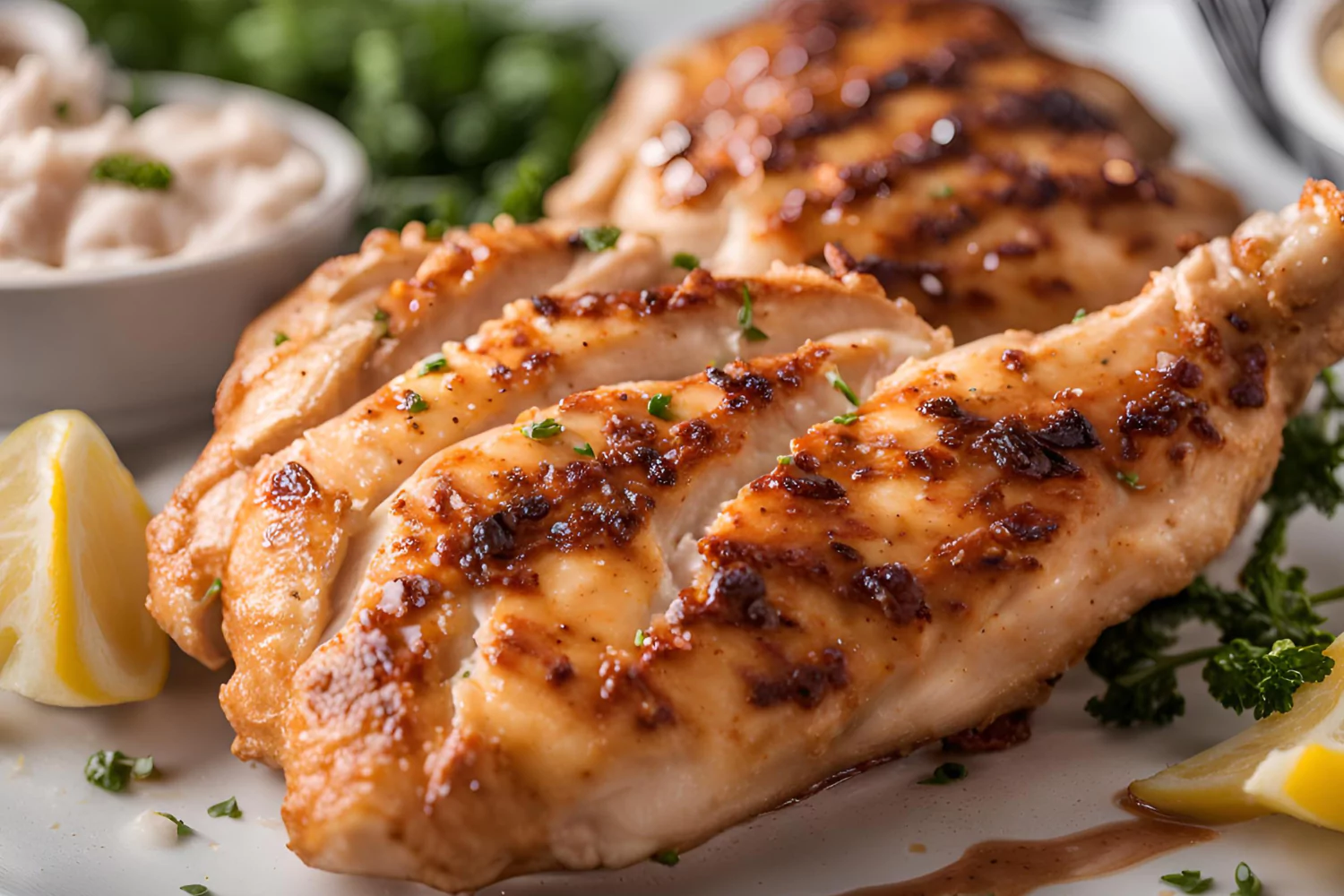
Common Problems and Solutions
Even with the best preparations, you might encounter some issues when air frying frozen chicken breast. Here are some common problems and how to solve them:
Uneven Cooking
If your chicken isn’t cooking evenly, it might be due to varying sizes or overcrowding in the air fryer basket. Try reducing the number of pieces in the basket or making sure they are similar in size. If the chicken is still unevenly cooked, reduce the temperature slightly and increase the cooking time to ensure thorough cooking without burning the outside.
Seasoning Issues
Sometimes, seasoning might not stick to the chicken properly. To fix this, ensure the chicken is well-coated with oil before applying the spices. If the seasoning still falls off, you can lightly mist the chicken with cooking spray after seasoning.
Overcooking and Drying Out
Overcooking can result in dry, tough chicken. To prevent this, keep a close eye on the internal temperature. Remove the chicken from the air fryer as soon as it reaches 165°F. Letting the chicken rest for a few minutes after cooking also helps retain moisture.
Air Fryer Differences
Different air fryers can yield different results. If your chicken comes out too dry or undercooked, try adjusting the temperature and cooking time slightly. You might need to experiment a bit to find the perfect settings for your specific model.
Tips From the Chef
Flip the Chicken Halfway Through
Flipping the chicken halfway through cooking ensures even browning and cooking. This step is crucial for achieving a uniform texture.
Check Internal Temperature
Always use a meat thermometer to check the internal temperature of the chicken. Insert it into the thickest part of the breast to ensure it reads 165°F. This ensures the chicken is safe to eat and perfectly cooked.
Preheat the Air Fryer
Preheating the air fryer helps achieve a crispy exterior and evenly cooked interior. Set your air fryer to the desired temperature and let it run empty for about 3-5 minutes before adding the chicken.
Use Oil for Crispiness
Lightly coating the chicken with oil helps achieve a crispy texture. Use a neutral oil, such as avocado or olive oil. This not only helps the seasoning stick but also adds a delicious crispiness.
Experiment with Seasonings
Don’t be afraid to experiment with different spices and herbs. Combine different flavors to create your ideal blend. From smoked paprika to Italian herbs, the possibilities are endless.
Common Questions About Air Fry Frozen Chicken Breast
FAQs Section
Can I cook frozen chicken breasts in the air fryer?
Yes, you can. You may cook frozen chicken breasts in the air fryer without having to thaw them beforehand thanks to its quick hot air circulation.
How long does it take to cook frozen chicken breasts in the air fryer?
Cooking times vary based on thickness, but typically, it takes about 20-30 minutes at 375°F. check more information here
Should I season the frozen chicken breasts before cooking?
Yes, seasoning enhances the flavor. Apply oil and your favorite spices before cooking.
Do I need to preheat the air fryer before cooking frozen chicken breasts?
Preheating ensures even cooking. Set your air fryer to the desired temperature and preheat for a few minutes.
How can I tell if the frozen chicken breasts are cooked through?
Check the interior temperature with a meat thermometer. It should read 165°F.
Can I add sauce or marinade to the frozen chicken breasts before cooking?
Yes, you can add sauce or marinade. However, excessive moisture can affect the crispiness.
Can I cook other frozen meats in the air fryer using the same method?
Yes, similar methods can be used for other meats. Adjust cooking time and temperature based on the type of meat.
Can I reheat leftover cooked chicken breasts in the air fryer?
Yes, reheat at 350°F for 3-5 minutes until warmed through.
Conclusion Of Air Fry Frozen Chicken Breast
Cooking air fry frozen chicken breast is a simple, efficient, and healthy method that delivers delicious results every time. Whether you’re new to air frying or a seasoned pro, this guide provides all the essential steps and tips to make your air fry frozen chicken breast a success.
The air fryer not only saves time but also ensures your chicken is juicy on the inside and crispy on the outside. From seasoning ideas to troubleshooting tips, you’re now equipped with everything you need to create a perfect meal.
Don’t hesitate to experiment with different spices and side dishes to keep your meals exciting and varied. And remember, practice makes perfect. The more you use your air fryer, the more confident you’ll become in creating a wide range of tasty dishes.
